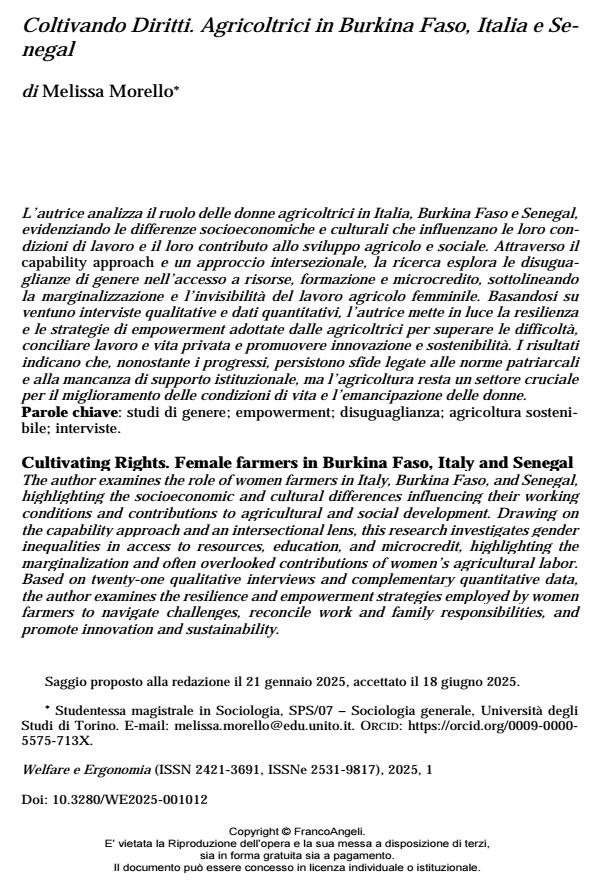Cultivating Rights. Female farmers in Burkina Faso, Italy and Senegal
Journal title WELFARE E ERGONOMIA
Author/s Melissa Morello
Publishing Year 2025 Issue 2025/1
Language Italian Pages 12 P. 207-218 File size 93 KB
DOI 10.3280/WE2025-001014
DOI is like a bar code for intellectual property: to have more infomation
click here
Below, you can see the article first page
If you want to buy this article in PDF format, you can do it, following the instructions to buy download credits

FrancoAngeli is member of Publishers International Linking Association, Inc (PILA), a not-for-profit association which run the CrossRef service enabling links to and from online scholarly content.
The author examines the role of women farmers in Italy, Burkina Faso, and Senegal, highlighting the socioeconomic and cultural differences influencing their working conditions and contributions to agricultural and social development. Drawing on the capability approach and an intersectional lens, this research investigates gender inequalities in access to resources, education, and microcredit, highlighting the marginalization and often overlooked contributions of women’s agricultural labor. Based on twenty-one qualitative interviews and complementary quantitative data, the author examines the resilience and empowerment strategies employed by women farmers to navigate challenges, reconcile work and family responsibilities, and promote innovation and sustainability. The findings reveal that, despite progress, challenges rooted in patriarchal norms and insufficient institutional support persist; nevertheless, agriculture continues to play a pivotal role in enhancing livelihoods and promoting women’s emancipation.
Keywords: gender studies; empowerment; inequality; sustainable agriculture; interwies.
Melissa Morello, Coltivando Diritti. Agricoltrici in Burkina Faso, Italia e Senegal in "WELFARE E ERGONOMIA" 1/2025, pp 207-218, DOI: 10.3280/WE2025-001014